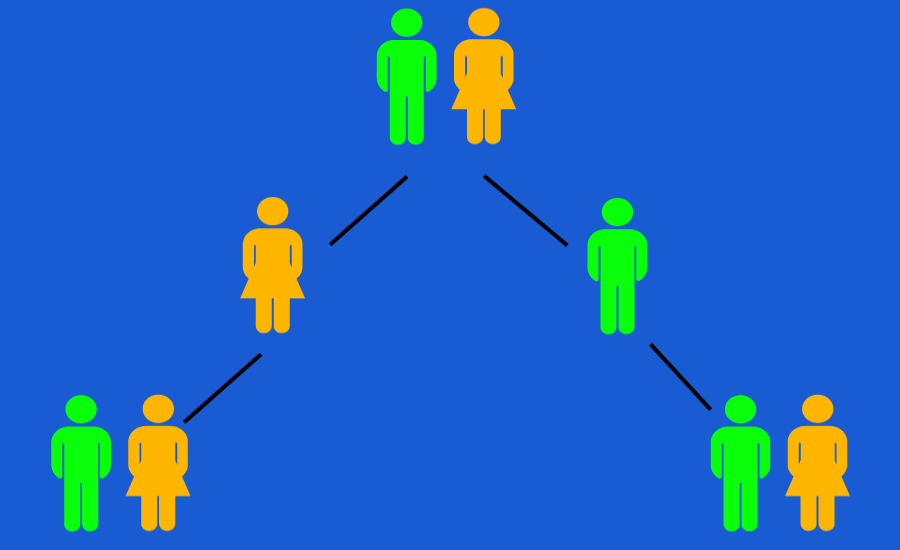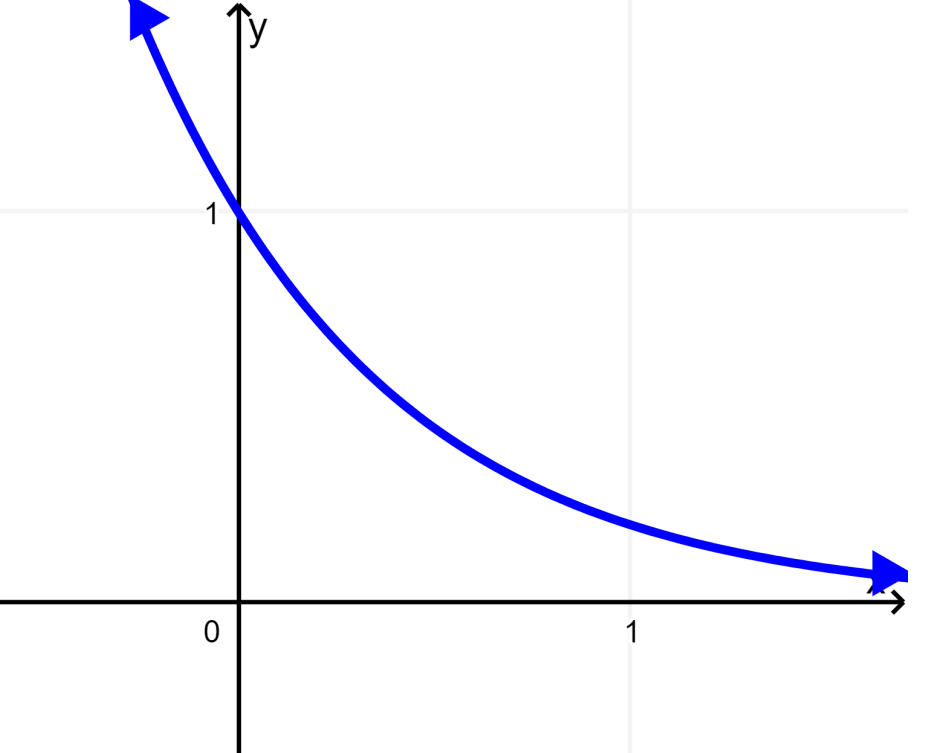There are important applications of exponential functions in everyday life. The most important applications are related to population growth, exponential decline, and compound interest. These situations can be easily modeled with exponential functions. It is possible to predict future scenarios with the knowledge of certain current parameters.
ALGEBRA

Relevant for…
Learning about some applications of the exponential function.
ALGEBRA

Relevant for…
Learning about some applications of the exponential function.
1. Population growth
In some cases, scientists start with a certain number of bacteria or animals and watch their population change. For example, if the population is doubling every 7 days, this can be modeled by an exponential function.
The general formula used to represent population growth is $latex P (r, t, f) = P_{i} {{(1 + r)}^{\frac{t}{f}}}$, where $latex P_{i }$ represents the initial population, r is the population growth rate, t is the elapsed time, and f is the period over which the population grows by a rate of r.
The ratio of t to f is many times simplified into a single value that represents the number of compound cycles. Although this is the general formula, many of the population models use the number e and form the formula $latex P P_{i}{{e}^{kt}}$.
Population models can occur in two ways. One way is if we have an exponential function and we have to find estimates. The second way involves finding an exponential equation from the given information. We will look at examples both ways.

EXAMPLE 1
The population of a city is $latex P=350 000{{e}^{0.012t}}$, where $latex t=0$represents the population in the year 2020.
a) Find the population of the city in the year 2030.
Solution: To find the population in the year 2030, we need to use $latex t=10$ in the given equation:
$$P=350 000{{e}^{0.012t}}=350 000{{e}^{0.12}}=394 624$$
b) Find the population of the city in the year 2035.
Solution: To find the population in the year 2035, we need to use $latex t=15$:
$$P=350 000{{e}^{0.012t}}=350 000{{e}^{0.18}}=419 026$$
c) Find when the population will equal 450,000.
Solution: From the previous question, we know that the population in 2035 will be 419,026, therefore, it makes sense that the answer is greater than 2035. Remember that the P in the equation is the final population, which we have as 450,000. The equation that we have to solve to find the time is:
$latex 450 000=350 000{{e}^{0.012t}}$
Thus, we solve as follows:
$latex 450 000=350 000{{e}^{0.012t}}$
$$\frac{450 000}{350 000}={{e}^{0.012t}}$$
$$\ln\left( \frac{450 000}{350 000}\right)=\ln {{e}^{0.012t}}$$
$$\ln\left( \frac{450 000}{350 000}\right)= 0.012t$
$$\frac{\ln\left( \frac{450 000}{350 000}\right)}{0.012}= t$$
$latex 20.94=t$
Therefore, it will take almost 21 years for the population to reach 450,000. This means that the population will reach 450,000 around 2041.
EXAMPLE 2
A scientist starts with 100 bacteria. After 10 days, he finds that the population has grown to 500.
a) Determine an equation for this population of bacteria.
Solution: To find an equation, we need to find the values of $latex P_{i}$ and $latex k$. $latex P_{i}$ is the number of bacteria that the scientist starts with, that is, 100. We know that after $latex t=10$ days, the population is 500, so we can use this to find $latex k$:
$latex 500=100{{e}^{10k}}$
$latex 5={{e}^{10k}}$
$latex \ln (5)=\ln {{e}^{10k}}$
$latex \ln (5)=10k$
$latex \frac{\ln (5)}{10}=k$
$latex 0.161=k$
Now that we know the value of em>k, we plug these values into the general equation to obtain:
$latex P=100{{e}^{0.161t}}$
b) Use the equation to calculate the population after 20 days.
Solution: We have to substitute the value of 20 for t in the equation obtained in the previous question:
$$P=100e^{0.161(20)}=100{{e}^{3.22}}=2 502.8$$
This is equal to approximately 2,503 bacteria after 20 days.
c) Use the equation to estimate when the population will equal 1000.
$latex 1000=100{{e}^{0.161t}}$
$latex \frac{1000}{100}={{e}^{0.161t}}$
$latex \ln (10)=\ln {{e}^{0.161t}}$
$latex \ln (10)= 0.161t$
$latex \frac{\ln (10)}{0.161}= t$
$latex 14.3=t$
Therefore, between 14 and 15 days, the bacteria population will be 1000.
2. Exponential decay
Similar to how it is possible for one variable to grow exponentially as a function of another, it is also possible for the variable to decrease exponentially. Consider the decline of a population that occurs at a rate proportional to its value. This rate at which the population is decreasing remains constant, but as the population continues to decrease, the overall decline becomes less and less steep.
The exponential decay can be modeled with the formula $latex N(t)=N_{0}{{e}^{- \lambda t}}$, where $latex N$ is the final quantity, $latex N_{0}$ is the initial quantity, $latex \lambda$ is the decay constant and t is time.

EXAMPLE
The number of milligrams of a drug in a person’s body after t hours is given by the exponential function $latex F=20{{e}^{-0.4t}}$.
a) Find the amount of the drug after 2 hours.
Solution: To solve the problem, we use $latex t=2$ in the given function:
$latex F=20{{e}^{-0.4(2)}}=20{{e}^{-0.8}}=8.987$
After 2 hours, 8,987 milligrams of the drug remain in the body.
b) Find the amount of drug after 5 hours.
Solution: We use $latex t=5$ in the given function:
$latex F=20{{e}^{-0.4(5)}}=20{{e}^{-2}}=2.707$
After 5 hours, 2,707 milligrams of the drug remain in the body.
c) When will the amount of drug in the body be 1 milligram?
Solution: We have to use $latex F=1$ and solve for time:
$latex 1=20{{e}^{-0.4t}}$
$latex 0.05={{e}^{-0.4t}}$
$latex \ln (0.05)=\ln {{e}^{-0.4t}}$
$latex \ln (0.05)=-0.4t$
$latex \frac{\ln (0.05)}{-0.4}= t$
$latex 7.49=t$
Therefore, after about 7 hours and 30 minutes, the amount of drug left in the body is 1 milligram.
3. Compound interest
Compound interest is an application of exponential functions that is commonly found in our day-to-day life. Interest is generally a fee charged for borrowing money. There are two types of interest: simple and compound.
In simple interest, interest is accrued only on the principal or the initial amount. This means that the amount of interest earned in each period is the same since the interest is earned on the initial amount that has not been changed.
In compound interest, interest is accrued on both the initial amount and previously earned interest. For this reason, if all other conditions are the same, compound interest grows at a faster rate than simple interest. The amount of interest earned grows each period.
The formula for compound interest is $latex A=C{{(1+\frac{r}{n})}^{nt}}$, where A represents the amount of money after a period of time, C represents the initial amount of money, r represents the interest rate written in decimal, n is the number of times that interest is compounded in a year, and t is the amount of time in years.

EXAMPLE
a) Imagine you invest 1,000 dollars in a savings account. The average interest rate is 5% and is compounded 4 times a year. How much money will there be in the savings account after 10 years?
Solution: We use the formula $latex A=C\left(1+\frac{r}{n} \right)^{nt}$ and we substitute $latex C=1000$, $latex r=0.05$, $latex n=4$ and $latex t=10$.
$$A=1000\left(1+\frac{0.005}{4} \right)^{4(10)}=1643.6$$
b) Now imagine that you invest the same 1,000 dollars in an account that offers you 7% interest compounded monthly. How much money will you have after 10 years?
Solution: Now we use the formula with the information given: $latex C=1000$, $latex r=0.07$, $latex n=12$ y $latex t=10$.
$$A=1000\left(1+\frac{0.007}{12} \right)^{12(10)}=2009.7$$
See also
Interested in learning more about applications of functions? Take a look at these pages:



